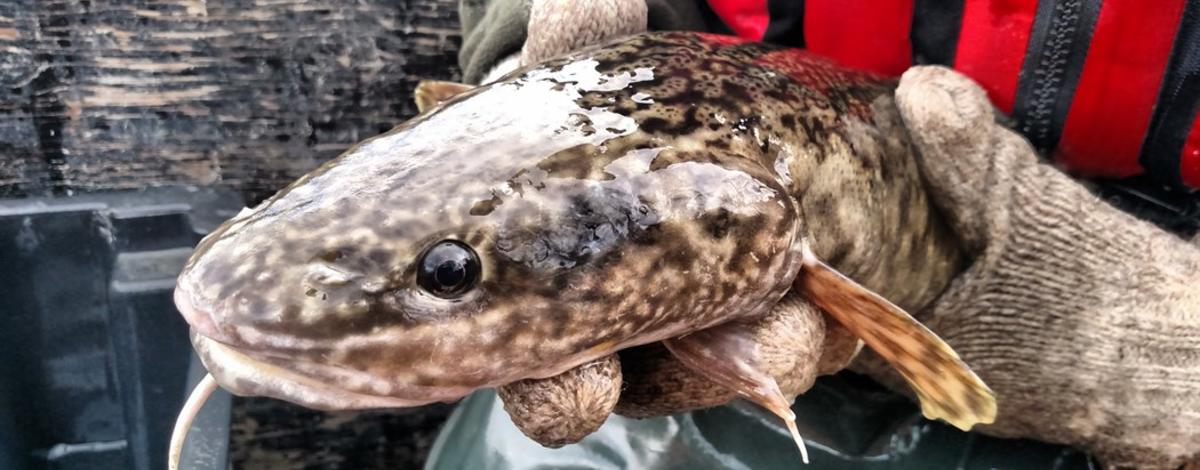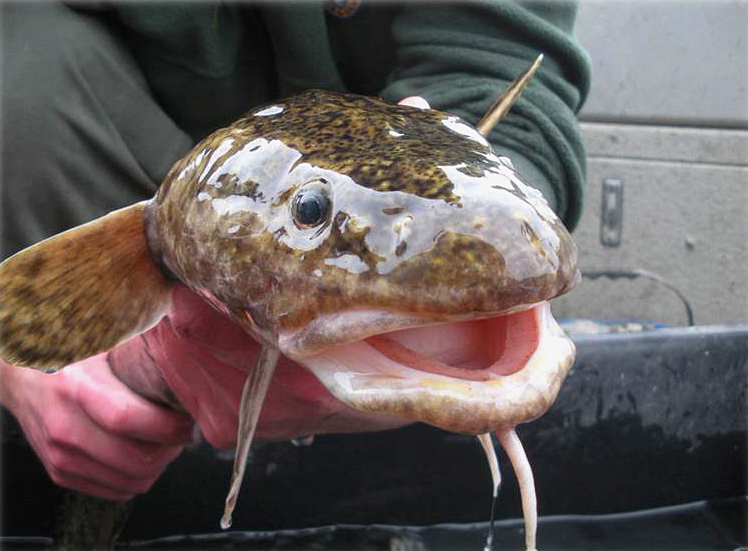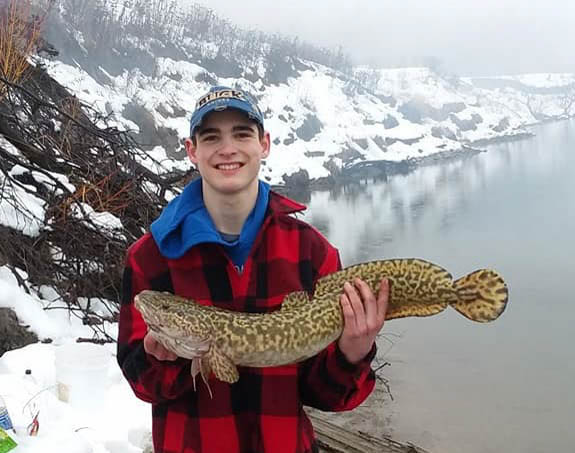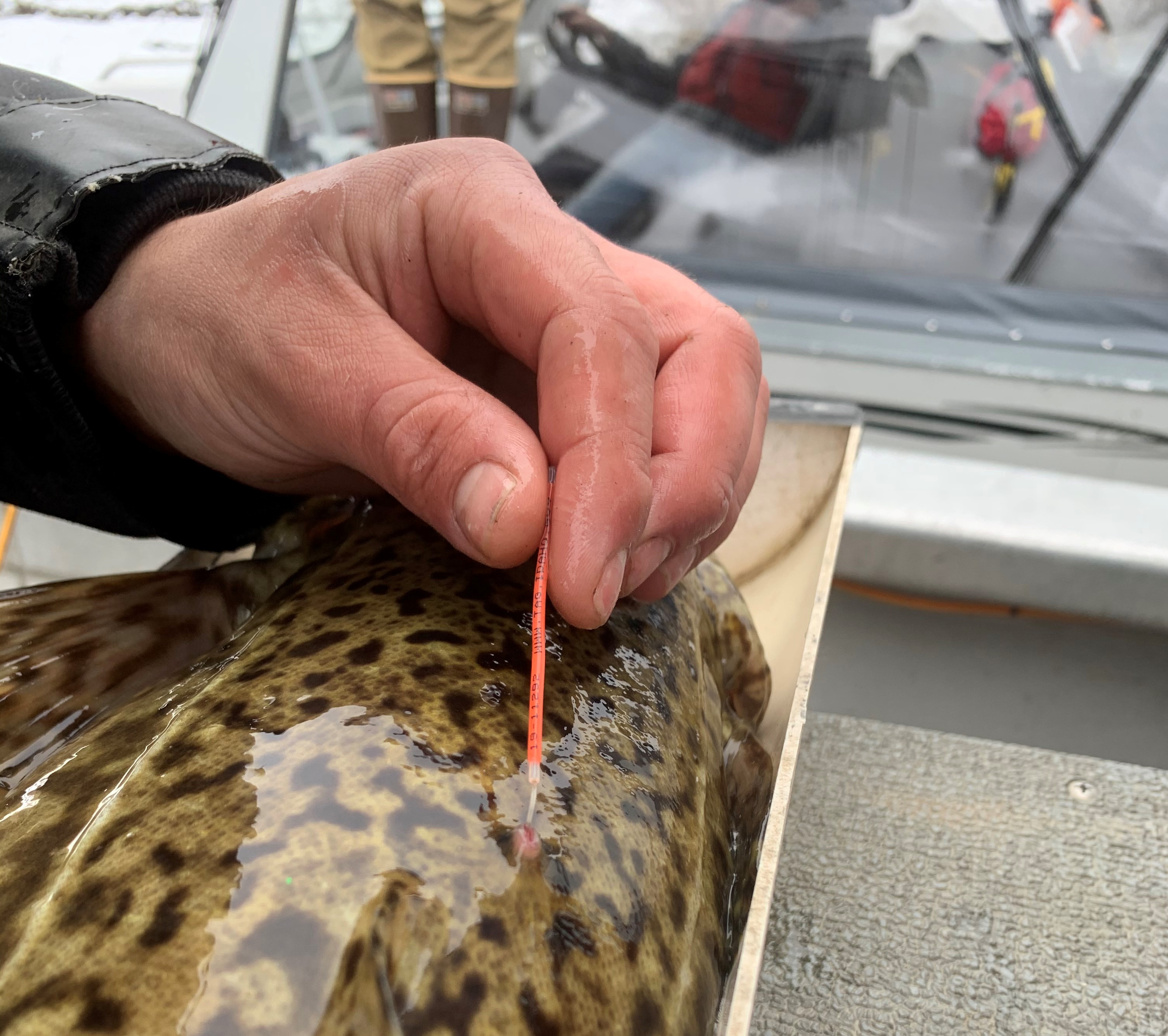Burbot fishing on the Kootenai River is most productive during the winter months as burbot prepare to spawn in February and March. Unlike the summer months when burbot often hunker down in deep pools or in Kootenay Lake in British Columbia, this time of year they can often be found in shallower water or in tributaries to the river.
What the Heck Is a Burbot?
Burbot—also known as bubbot, cusk, freshwater cod, ling, lingcod and eelpout—are the only freshwater cod species in North America, and they have a special place in Idaho’s heart. These long-bodied, cold-water fish are not your run-of-the-mill sport fish. Burbot have flat heads and long bodies that sprout long pectoral fins just behind their gills. Their back-half is eel-like, with stumpy rounded fins. Burbot have brownish-yellow mottled skin, earning them the nickname “Kootenai leopards” among anglers.




